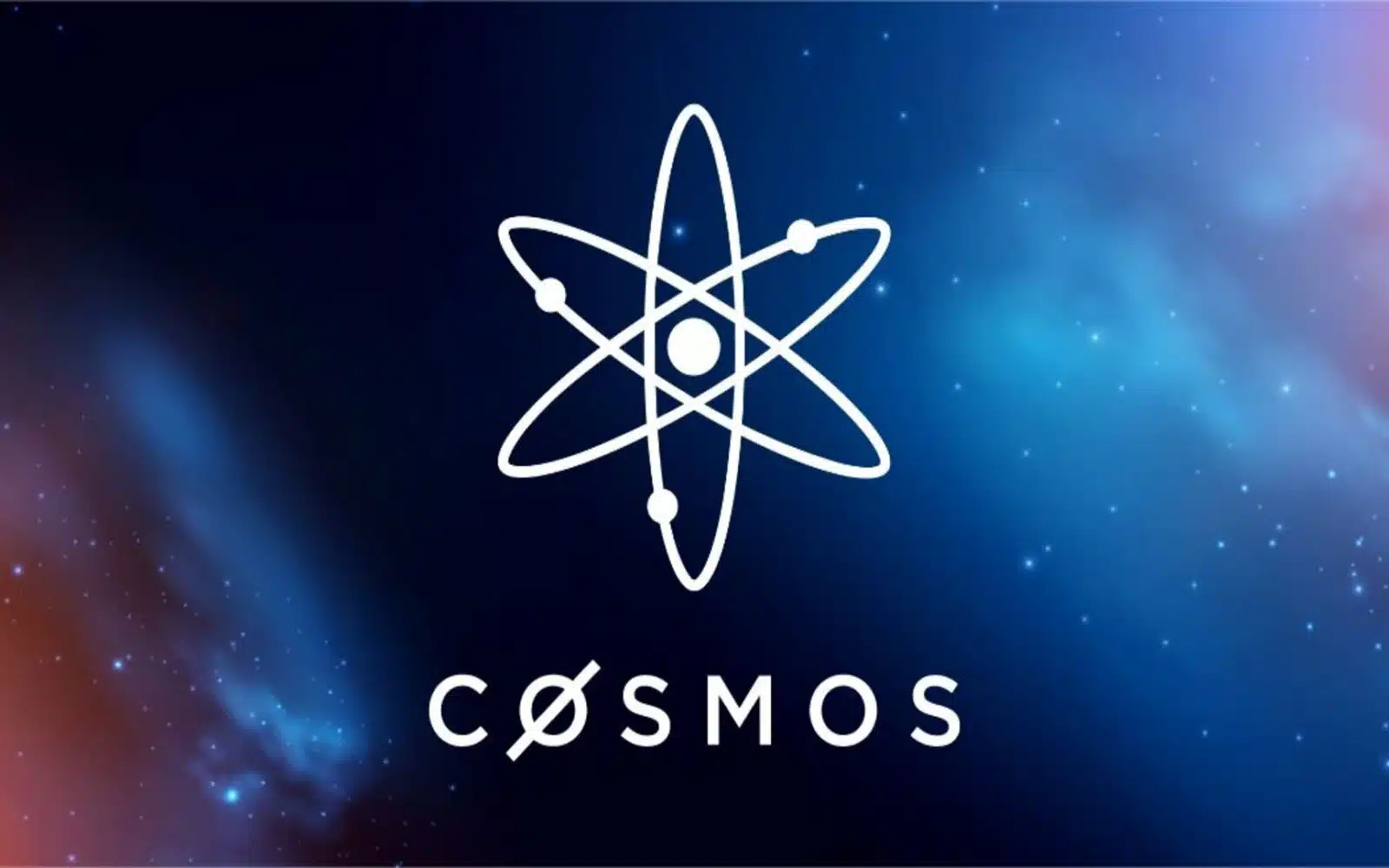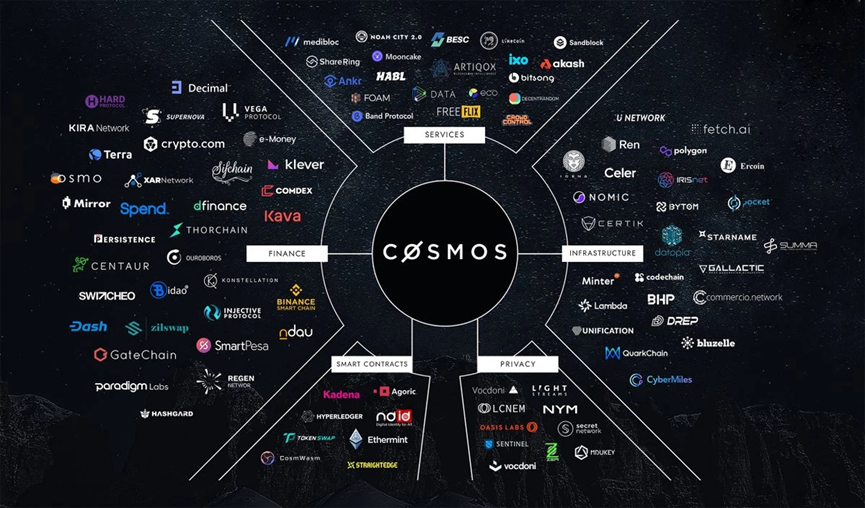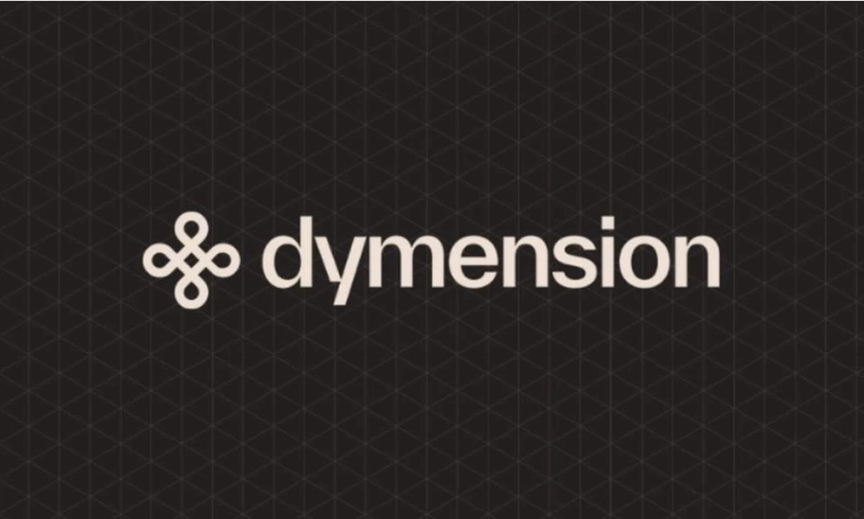Author: Daniel Li, CoinVoice

The Celestia fire has sparked widespread discussions on modular blockchains. In fact, modular blockchains have always been an important part of the narrative of application chains, rather than something new. Among the underlying architectures of many application chains, Cosmos is undoubtedly the most eye-catching, providing strong support and a rich ecosystem for the development of application chains through its unique modular public chain framework. With the interoperability protocol and security mechanism of Cosmos, different application chains can communicate and interact with each other, achieving the flow of cross-chain data and value.
The modular design concept of Cosmos also makes the development of application chains simpler and more scalable, providing a broad space for innovative applications in various industries. Recently, various modular hot projects and innovative cases have emerged in the Cosmos ecosystem, further proving the huge potential of the modular design concept of Cosmos in promoting the commercial application of blockchain technology. As more and more public chains begin to focus on modular development, Cosmos, as one of the earliest adopters of modular development, will undoubtedly become a potential winner in this trend.
Modularity: The "Smart Contract Client" of the Web3 World
The concept and practice of modularity were not introduced by blockchain technology, but have long been a concept in the field of software engineering and system design. The origin of modularity can be traced back to the early days of computer science. Early computer programs were usually written in a linear manner, with code and functionality often coupled together, making code reuse and maintenance difficult. To solve this problem, software engineers began to adopt a modular approach, dividing the code into modules or functions, with each module responsible for specific functionality. This modular approach made the code more readable, easier to maintain, and reusable.
With the development of computer science, the concept of modularity has gradually been applied to various fields and technologies. In 2019, when Mustafa Albasan wrote the white paper for "Lazy Ledger," he detailed a new architecture in which the blockchain is only used for ordering and ensuring the availability of transaction data, and is not responsible for executing and verifying transactions. The purpose of this architecture is to address the scalability issues of existing blockchain systems. At that time, he referred to this as the "smart contract client," and later, with the emergence of Rollup, this concept became more certain, and the structure was redefined as a modular blockchain.

Celestia is the first true modular public chain, but the technology of modular public chains did not appear with Celestia. Celestia itself is built on the Cosmos SDK and uses Tendermint as its consensus engine, so in terms of modularity, Cosmos' development actually came earlier. Cosmos has been committed to building a complete application ecosystem system through modularity. Last year, the Interchain Foundation of the Cosmos ecosystem publicly released the development goals of the 2024 Interchain stack, with one of the most important goals being to increase modularity through generalized software to more easily adapt to specific use cases. The CometBFT V1 Alpha version released by Cosmos just last month aims to further reduce bandwidth consumption and enhance modularity. It is clear that modularity has always been the strategic core of Cosmos.
Unlike a single-layer blockchain, Cosmos' initial vision was to build a platform for decentralized trading, storage, and protection of value, encouraging cooperation, innovation, and competition. Therefore, Cosmos chose to use a modular software stack—Cosmos SDK and interconnected blockchain networks for construction. This allows the center and regions of the Cosmos ecosystem to launch modular blockchains with custom execution environments, while utilizing IBC for cross-chain communication. This modular and autonomously growing vision has rapidly increased the number of regions. As of now, 52 out of 56 regions are active.
As more and more projects are deployed on public chains, it becomes increasingly difficult to implement all application scenarios through a traditional single public chain. When developers use public chains as the underlying technology, they may need to design multiple public chains for different application scenarios, while modular public chains make it simple to build multi-functional blockchain applications. Modular design also rescues blockchain from the impossible triangle (decentralization, scalability, security), allowing different modules to be responsible for different goals and achieve those goals through module combination, rather than requiring one module to accomplish all goals. As more composable and scalable modular public chains emerge, blockchain projects and applications with various advantages will grow exponentially and be widely applied in our daily lives. Only then can public chain networks as the underlying architecture truly support the future Web3 world.
Inventory of Modular Ecosystem Projects in Cosmos
Blockchain technology has rapidly developed in the past few years and brought revolutionary changes to many industries. However, with the rise of decentralized applications (dApps), we have also realized that the shared bandwidth system of traditional blockchains may limit their growth. To address this issue, Cosmos emerged. The modular architecture of Cosmos provides convenience for developers. Through Cosmos SDK, IBC, and Tendermint engine, developers can quickly build modular specific application chains. In addition to Celestia mentioned earlier, the public chains built based on Cosmos modular tools also include several noteworthy hot projects.
Dymension
Dymension is a modular blockchain network using Cosmos and Celestia technology, aiming to ensure the security and interoperability of RollApps using the IBC standard. Dymension adopts a modular design, dividing blockchain functions into multiple levels and providing security, interoperability, and liquidity through the Dymension Hub. Developers can deploy RollApps using the Dymension Hub and interact with other RollApps and IBC-supported chains.

The architecture of Dymension includes the execution layer, settlement layer, consensus layer, and data layer. The execution layer consists of RollApps, responsible for processing transactions and state calculation. The settlement and consensus layers form the Dymension Hub, which is a proof-of-stake chain based on the Cosmos SDK, using Tendermint Core's state replication model for networking and consensus. The Dymension Hub provides security, interoperability, and liquidity for RollApps. The data layer is the data availability provider supported by the Dymension protocol, allowing developers to choose a suitable data availability provider as needed.
Currently, Dymension has launched the incentive testnet Froopyland, allowing developers to deploy IBC RollApps without permission. In the competitive blockchain industry, modular blockchains are gaining more and more attention and status. Dymension is an important part of this trend. Similar to projects like Fuel and Celestia, Dymension has made important contributions to the development of the blockchain ecosystem through its modular design and innovative solutions.
DYM is the native token of Dymension, with a total supply of 1 billion. On January 1st, Dymension announced the launch of the Genesis Drop event, and will airdrop 70 million DYM to users in the Celestia, Ethereum, Cosmos, and Solana ecosystems. Users can claim the airdrop before 20:00 on January 21, 2024, Beijing time.
Osmosis
Osmosis
Osmosis is an independent Layer1 application chain built on the Cosmos SDK. It is also the first DEX application chain in the Cosmos ecosystem to integrate IBC cross-chain communication. Osmosis operates similarly to other AMM DEXs, where liquidity providers deposit liquidity into pools, and traders interact directly with these pools. By leveraging the interoperability provided by the Cosmos ecosystem, Osmosis aims to achieve seamless cross-chain liquidity and enable users to access a wide range of financial products and services.
As a decentralized AMM running on the Cosmos network, one of Osmosis's main goals is to expand the overall utility of AMMs, not just facilitate token exchanges. Osmosis is not just an AMM DEX; it also provides tools that allow developers to build their own custom AMMs using liquidity pools. Additionally, Osmosis intends to enable the community to establish and customize their own liquidity pools to promote innovation and experimentation in the DeFi space and support the creation of specialized liquidity pools to meet specific needs and use cases.
The first major innovation of Osmosis is the superfluid collateral module, allowing the underlying OSMO tokens in the liquidity pool to simultaneously provide liquidity and collateral to ensure the security of Osmosis. In the latest Fluorine upgrade, Osmosis has added more features such as stablecoin automated market maker (stableswap AMM), IBC rate limiting, and multi-hop routing. IBC rate limiting is a response measure to cross-chain bridge hacking attacks, limiting the maximum token supply that can enter and exit Osmosis within a defined time window.
OSMO is the native token of Osmosis and plays a crucial role in the Osmosis ecosystem, incentivizing users to participate in governance, stake tokens, provide liquidity, and serve as the primary trading currency on the platform. The maximum supply of OSMO is 1 billion, and the current price is $1.80. Despite the significant increase in SOL's price, it is often overlooked that the price increase of some Cosmos application chain tokens such as INJ and TIA has been even better. With the growing maturity of the Osmosis ecosystem, OSMO is expected to derive value from the continuously expanding Cosmos ecosystem and experience explosive growth.
Neutron
Neutron is a permissionless general-purpose consumer chain that provides a secure and versatile platform for the Cosmos Hub. Its goal is to drive the development of the Cosmos ecosystem and provide developers and users with a rich set of DeFi applications and innovative use cases. Neutron's design aims to provide users with greater flexibility and choice by maintaining an isolated state from the Cosmos Hub while offering comprehensive smart contract functionality.
As a permissionless platform, Neutron allows developers to deploy various types of smart contracts without whitelist verification through governance voting. This provides developers with a faster and more flexible development environment, encouraging them to experiment with new and experimental features. By using CosmWasm contracts, developers can leverage powerful features and tools to create smart contracts and decentralized applications.
The emergence of Neutron has brought a wealth of DeFi applications and use cases to the users of the Cosmos Hub. For example, the Lido project chose to issue their ATOM staking derivatives on Neutron, providing users with more choices and opportunities to participate in liquidity mining and yield optimization. In addition, other collaborative projects such as Astroport, Squid, Croncats, and Skip Protocol have brought more innovative features and use cases to Neutron, such as cross-chain capabilities and asset management solutions.
NTRN, as the native token of Neutron, plays a crucial role in cross-chain communication and the security of dApps. It holds value not only in the investment field but also in various use cases such as paying for cross-chain transaction fees, staking, and participating in network governance, providing avenues for users and investors to derive value. The current price of NTRN is $1.37, and considering Neutron's market capitalization of approximately $380 million and fully diluted valuation of $1.3 billion, the price of NTRN is clearly undervalued.
Injective
Injective is an application-specific blockchain built using the Cosmos SDK. Its goal is to become an interoperable decentralized trading infrastructure layer. Unlike decentralized exchanges (DEXs) running on Ethereum, Binance Smart Chain, or other Layer-1 networks, the Injective protocol provides trading services on its own execution layer and allows third parties to build trading platforms without permission. All trading platforms built on Injective share the same order book to maximize capital utilization. The underlying Tendermint Core grants the protocol the ability to process a large number of transaction requests simultaneously and maintain on-chain security.
The goal of the Injective protocol is to bring liquidity from other chains through cross-chain mechanisms. This chain allows traders to communicate with other IBC-enabled chains and achieve interoperability with the Ethereum mainnet through the Injective cross-chain bridge. This connectivity enables the platform to accumulate liquidity through seamless bidirectional communication and support cross-chain trading of tokens from different ecosystems. The chain has successfully achieved cross-chain transfers with Terra, Cosmos Hub, and the Ethereum network and plans to achieve compatibility with the Ethereum Virtual Machine (EVM) this year.
INJ is the native and governance token of the Injective Protocol, playing a crucial role in protocol and ecosystem governance, derivative collateral, protocol security, market maker and relayer incentives, and capturing value from transaction fees. Additionally, the INJ token has a unique mechanism of burning auctions, helping to accumulate value for the entire Injective ecosystem. In 2023, the price of the INJ token surged from a low of $1.27 at the beginning of the year to a high of $45.52, a staggering increase of 3484%. The current price of INJ is $37.20, and it ranks 31st in terms of market capitalization.
免责声明:本文章仅代表作者个人观点,不代表本平台的立场和观点。本文章仅供信息分享,不构成对任何人的任何投资建议。用户与作者之间的任何争议,与本平台无关。如网页中刊载的文章或图片涉及侵权,请提供相关的权利证明和身份证明发送邮件到support@aicoin.com,本平台相关工作人员将会进行核查。




